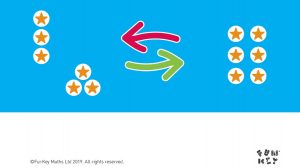Is division trickier than multiplication?
Division continues to get a bad press in many maths classrooms. It is perceived by many teachers and students to be trickier than multiplication.
For those who have a comfortable understanding of the structure of multiplication and division, there is no obvious case for labelling division as more difficult than multiplication.
Three elements to multiplication and division
There are three elements to multiplication and division: the whole, the number of parts and the size of each part. If you prefer, you could call the three elements the total, the number of groups and the number in each group. In a multiplication context, you could call the three elements the product, the multiplier and the multiplicand, or in a division context, the dividend, the divisor and the quotient.
Whatever name you give the three elements, you do not change the underlying reality: there are three things going on in any simple division or multiplication scenario, and these are the same three elements in both multiplication and division.
In reality, the only difference between a multiplication and division context is your starting point. Do you start with the whole and split it into equal parts? Or, do you start with the parts and combine them to make a new whole?
Inverse operation
 Teachers often talk about division being the inverse operation of multiplication without real understanding of what that means.
Teachers often talk about division being the inverse operation of multiplication without real understanding of what that means.
Students parrot those words, “inverse operation” without understanding what it means. Often, students can even successfully rearrange the numbers in a multiplication equation to produce an accurate division equation without understanding the structural reality behind what they are doing.
If you want detailed guidance for how to approach the teaching of multiplication and division through the focus on structure and the the three key elements, please go to our extensive teacher guidance here:https://www.funkeymaths.com/howtouse/
The lightbulb moment
When students, and indeed teachers, realise the simplicity of the structure of multiplication and division and how they are linked, it is one of those glorious lightbulb moments, when struggle dissolves into enlightenment and relief.
The downloadable resource below may help you reach that moment of relief in class. It is designed as a whiteboard resource to make visible the links between multiplication and division. Use it to revisit the three key questions which elicit the three key elements in any multiplication or division scenario:
How many groups?
How many in each group?
How many altogether?
Notice with your students that when you move from groups to the whole, you are multiplying and when you move from the whole to equal groups, you are dividing. The numbers don’t change, just the order in which they appear.
The space at the bottom of each page of the whiteboard resource is for you to write up different equations the students can produce to describe what they can see. You can focus just on multiplication and division equations, or you can also write up addition and subtraction alternatives.
I hope this ready-made resource helps more children get to that moment of relief when division ceases to be so scary.
